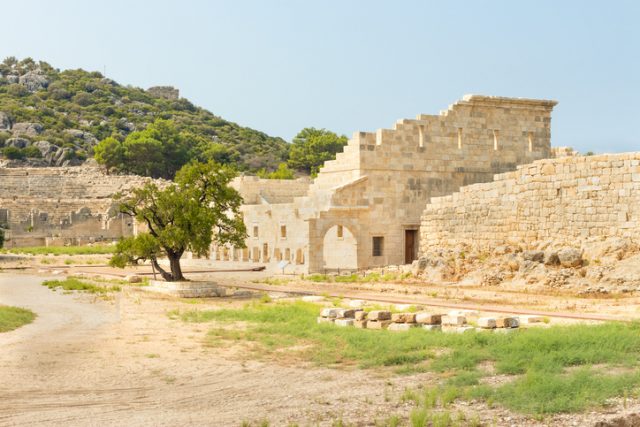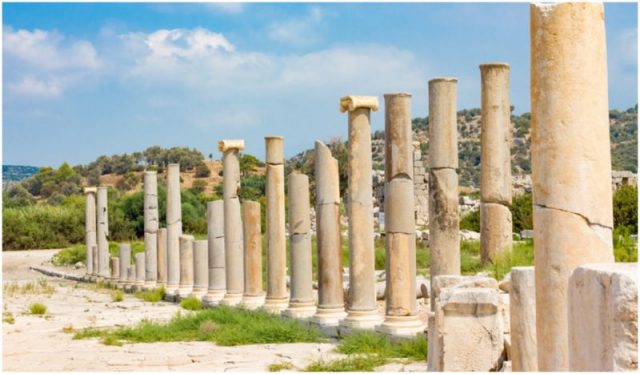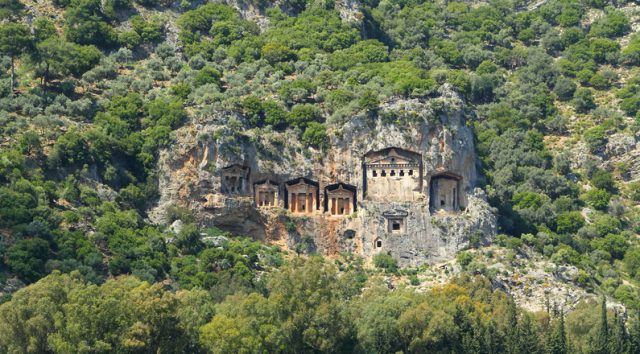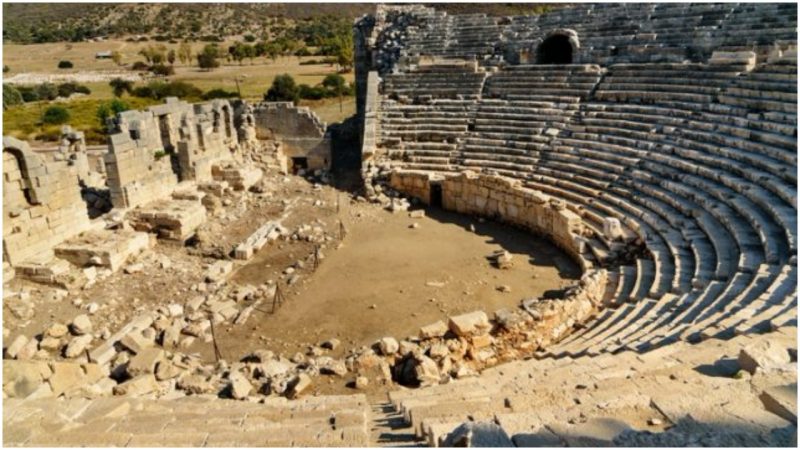Today it is valued as an important archaeological site in Turkey, but Patara was a prominent city of the ancient world. Situated in the Xanthos Valley on the coast of the Mediterranean Sea, it was the main port of Lycia and one of the six largest and most important cities of the Lycia Union. For the majority of the city’s history, it was part of the Lycian civilization.
Archeological excavations have revealed that the site was inhabited during the Bronze Age, so its rich history also boasts many legends. According to mythology, it was the son of Apollo, Patarus, who founded the city. In his honor, it was named Patara (Pttara in Lucian language).
Patara was also known as an important religious center, equally celebrated as the greatest ancient sanctuaries Delphi and Delos. Archeologists have discovered an enormous bust of Apollo that is believed to be part of the Temple of Apollo.

The temple is yet to be discovered, but written records claim that it was the home of the Oracle of Patara. Ordinary people, as well as powerful leaders, visited the temple to hear her prophecies and it is believed that she was as famous as the Oracle of Delphi. As the legend goes, Apollo would only come to Patara during the winter months, because it was that time of year when he would leave his temples in Delphi and Delos.
In 333 B.C., Patara, as well as the rest of Lycia, was conquered by Alexander the Great. Later the Ptolemaic dynasty, which ruled Egypt, took control over Patara and expanded the city. Ptolemaios II even changed its name to Arsinoe, in honor of his wife and sister. However, the name did not stick, since everyone continued to use its original name. After the Syrian War in 188 B.C., Patara was dominated by the Rhodians, until, in 167 B.C., the city finally regained its independence. But the peace didn’t last long. Mithridates VI of Pontus tried to capture the city, and although he didn’t succeed, in 42 B.C., Brutus did.

Being part of the powerful Roman Empire had its benefits. Emperor Claudius proclaimed the city a capital of both Lycia and Pamphylia province and soon it became known as “the chosen city” and “the metropolis of the Lycian nation.” The Emperor also demanded the construction of a map of the road system in Lycia. The result is the well-preserved Stadiasmus Provinciae Lyciae monument that includes 67 routes and distances between the cities of Lycia.
In 70 A.D. Emperor Vespasian also visited the city and sponsored the construction of the baths, known as Vespasian Baths. Another emperor to visit Patera was Hadrian and his wife, Sabina. They were very well received by the locals, who even compared them to Zeus and Hera. Hadrian did not depart before leaving his mark on the city. He constructed the large building known as the Hadrian Granary (granarium), situated next to the harbor.

When a new religion spread, the citizens of Patara were converted to Christianity. The city is acknowledged in the Bible as the place where apostle Paul changed ships during his missionary journey to Jerusalem. In 270 A.D. Saint Nicholas was born into a wealthy family in Patara. He lost his parents at a young age and gave away his inheritance to the poor. Later in life, he would become a bishop in the near Lycian town of Myra and he is the basis for the figure of Santa Claus.
As part of the Byzantine Empire, Patara did not lose its importance. To protect the city from invasions, Emperor Justinian built a defensive wall in the 6th century. However, during the constant battles between the Ottomans and the Byzantines, Patara started to lose its residents and eventually, the city was completely abandoned. The archaeological excavations on the site began in 1988 and continue to this day. Structures such as the amphitheater, the Main Avenue, and the monumental Arch of Modestus have been successfully excavated; however, much of the ancient city is yet to be discovered.
